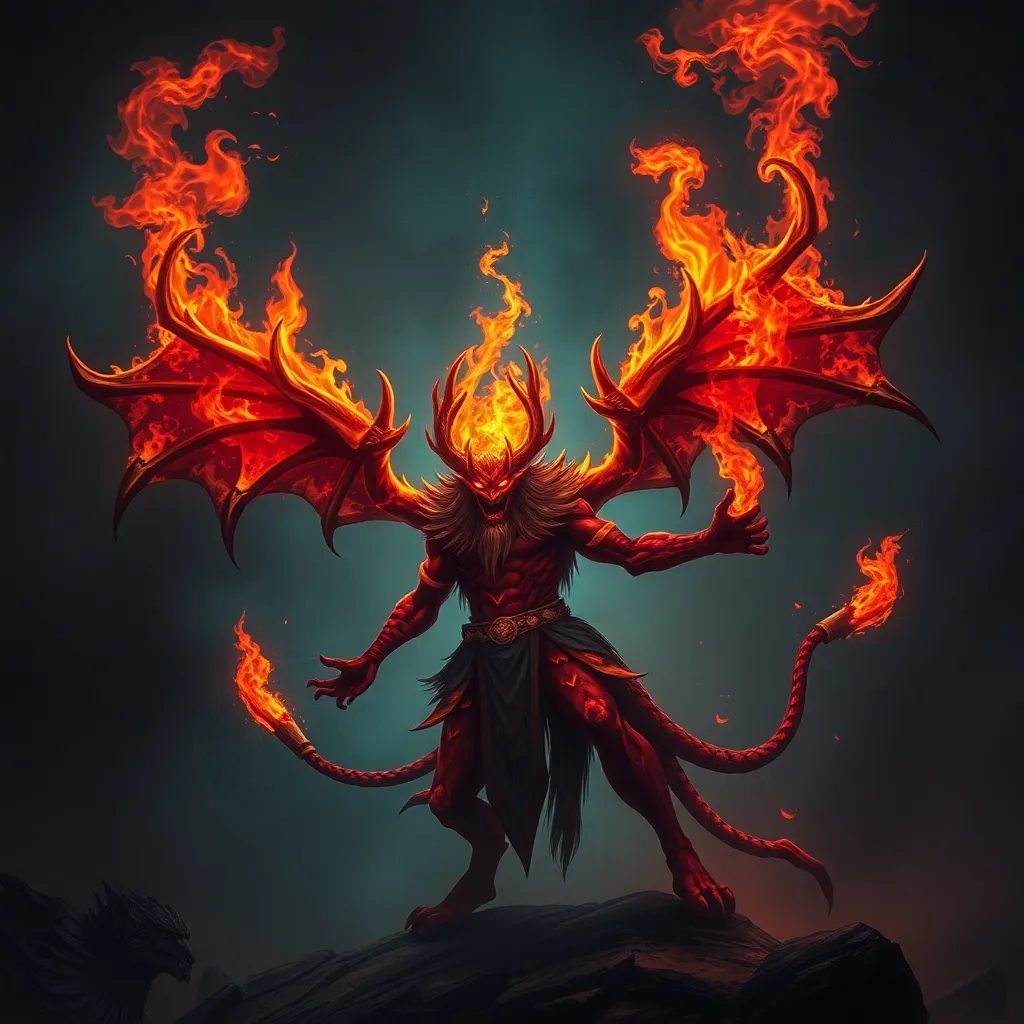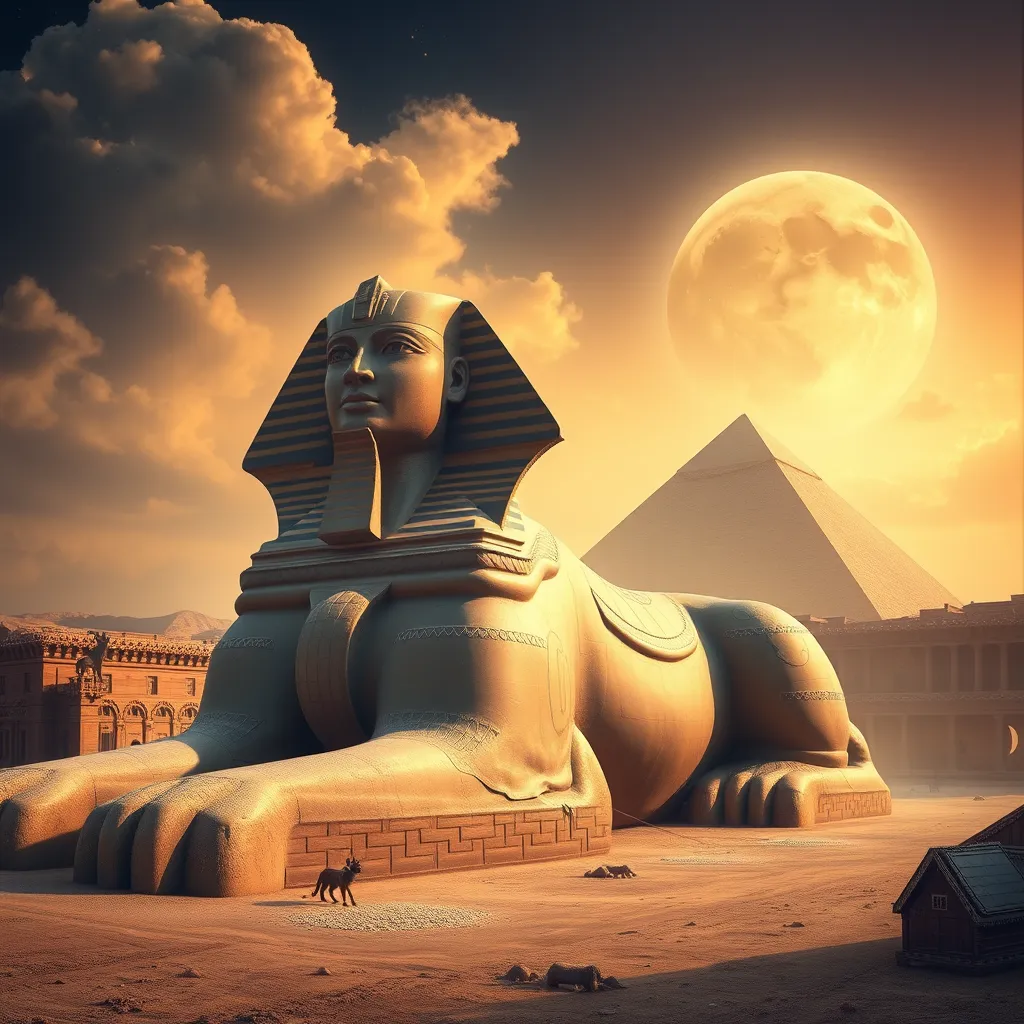The Flaming Fury: Ifrit in Arabic Mythology
I. Introduction to Ifrit
The term “Ifrit” originates from Arabic folklore and refers to a class of supernatural beings known for their fiery nature and formidable powers. The word itself is derived from the Arabic root “أفَرَ” (afara), meaning to be strong or powerful. Ifrits are often depicted as malevolent spirits, yet they also possess a complex nature that encompasses both good and evil.
In Arabic culture and mythology, Ifrits hold a significant place as they embody the duality of human existence. They are frequently mentioned in stories, poems, and religious texts, serving as symbols of both fear and fascination. In contemporary media, Ifrit has evolved into a character that is often portrayed in various forms, resonating with audiences around the globe.
II. The Nature of Ifrit
A. Physical characteristics and attributes
Ifrits are commonly described as large, powerful beings made of smokeless fire. They often possess an intimidating appearance, with features that can include:
- Fiery skin that glows with an inner light
- Horns resembling those of a ram
- Long, flowing hair made of flames
- Eyes that burn like embers
B. Ifrit as a supernatural being: Fire and smoke
Ifrits are primarily associated with fire and smoke, which are integral to their identity. They are believed to have the ability to manipulate these elements, creating illusions and instilling fear in those who encounter them. This mastery over fire not only signifies their destructive power but also their potential for creation and transformation.
C. Duality of Ifrit: Benevolent vs. malevolent traits
The duality of Ifrit is a central theme in their narrative. While they are often perceived as malevolent entities that wreak havoc and chaos, there are also instances where Ifrits display benevolence. They can act as protectors or guides, helping those who show kindness or respect towards them. This complexity mirrors the human condition, highlighting the struggle between good and evil.
III. Ifrit in Pre-Islamic Arabian Beliefs
A. Historical context of Ifrit in ancient Arabian traditions
In pre-Islamic Arabian traditions, Ifrits were often viewed as powerful spirits that inhabited the desert and wilderness. They were believed to influence the natural world and were invoked in various rituals and practices aimed at securing protection and guidance.
B. Role of Ifrit in pre-Islamic folklore
Ifrits played a pivotal role in the folklore of ancient Arabia, appearing in tales that warned against arrogance and disrespect towards the supernatural. They were often depicted as guardians of hidden treasures or as antagonists to heroes, embodying the challenges one must face on the path to greatness.
C. Influence of Ifrit on local customs and storytelling
The stories of Ifrits influenced local customs, particularly in oral storytelling traditions. They served as cautionary figures, teaching moral lessons and reflecting societal values. Their presence in these tales contributed to the rich tapestry of Arabian folklore.
IV. Ifrit in Islamic Texts and Teachings
A. The portrayal of Ifrit in the Quran and Hadith
Ifrit is mentioned in Islamic texts, particularly in the Quran, where they are described as a type of jinn. The Quran depicts Ifrits as beings created from smokeless fire, endowed with free will, capable of both good and evil actions. Their mention serves to remind believers of the unseen forces that exist alongside humanity.
B. Distinction between Ifrit and other jinn
In Islamic teachings, Ifrits are distinguished from other types of jinn due to their immense power and fiery nature. While all jinn possess supernatural abilities, Ifrits are often viewed as the most formidable among them, capable of great destruction and influence.
C. The significance of Ifrit in Islamic eschatology
Ifrits also hold a place in Islamic eschatology, where they are believed to play a role in the events of the Day of Judgment. Their actions and allegiances can signify the moral choices made by individuals during their lifetime, serving as a reminder of the consequences of those choices.
V. Ifrit in Literature and Folklore
A. Representation of Ifrit in classical Arabic literature
Ifrits have been prominent figures in classical Arabic literature, often depicted as powerful adversaries or guardians of knowledge and wealth. They symbolize the struggle between light and darkness, good and evil.
B. Notable stories and tales featuring Ifrit
One of the most famous stories involving Ifrit is the tale of “The Fisherman and the Ifrit” from “One Thousand and One Nights.” In this tale, an Ifrit is trapped in a bottle, and upon being released, he threatens the fisherman but is ultimately outsmarted. This narrative showcases the cunning nature of both the Ifrit and the human protagonist.
C. The evolution of Ifrit’s portrayal in modern literature
In modern literature, Ifrits have evolved to represent various themes, from vengeance and wrath to redemption and transformation. Authors often draw on the traditional traits of Ifrit, reinterpreting them to fit contemporary narratives.
VI. Ifrit in Popular Culture
A. Depictions of Ifrit in films, video games, and anime
Ifrit has found a prominent place in popular culture, appearing in numerous films, video games, and anime. Some notable examples include:
- Final Fantasy series, where Ifrit is depicted as a fire summon
- Anime series like “Fairy Tail” featuring Ifrit-inspired characters
- Films that explore Middle Eastern folklore incorporating Ifrits into their plots
B. The impact of Ifrit on global pop culture
The portrayal of Ifrit in global pop culture has contributed to a broader understanding of Arabic mythology. Their fiery nature and complex personalities resonate with diverse audiences, leading to a fusion of traditional and contemporary interpretations.
C. Comparisons between traditional and contemporary representations
While traditional representations of Ifrit emphasize their malevolence and power, contemporary portrayals often explore their multifaceted nature, allowing for a deeper exploration of themes such as redemption and moral ambiguity.
VII. Cultural Significance of Ifrit
A. Ifrit’s symbolism in Arabic and Islamic culture
Ifrits symbolize the struggle between good and evil, serving as reminders of the consequences of human actions. They embody the complexities of human nature, illustrating how power can be both a blessing and a curse.
B. Ifrit as a metaphor for human traits and societal issues
Ifrits can be seen as metaphors for various human traits such as greed, pride, and vengeance. Their stories often reflect societal issues, prompting discussions about morality, ethics, and the human condition.
C. The continued relevance of Ifrit in today’s society
In today’s society, Ifrit remains relevant as a symbol of the ongoing battle between light and darkness within individuals and communities. Their presence in literature and media continues to provoke thought and inspire reflection on human nature.
VIII. Conclusion
A. Recap of Ifrit’s significance in mythology and culture
Ifrit holds a significant place in Arabic mythology and culture as a powerful supernatural being that embodies the duality of existence. Their complex nature and rich history have made them enduring figures in storytelling.
B. The enduring legacy of Ifrit in modern storytelling
The legacy of Ifrit continues to thrive in modern storytelling, where they are reimagined to fit contemporary narratives while retaining their core attributes. This fusion of tradition and innovation keeps the stories alive for new generations.
C. Final thoughts on the fusion of tradition and contemporary interpretation
As we explore the tales of Ifrit, we see a fascinating interplay between tradition and modernity. Their evolution reflects the changing perceptions of good and evil, making Ifrit a timeless symbol in the tapestry of human storytelling.



